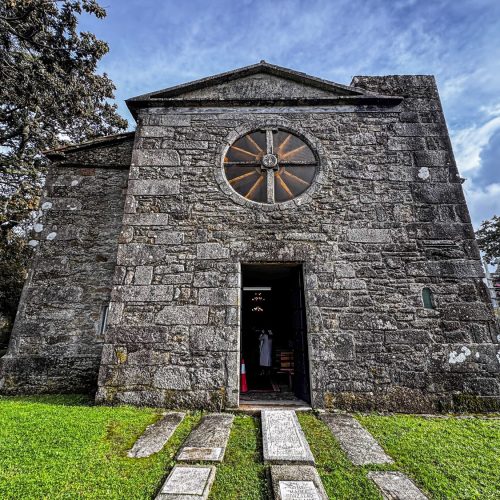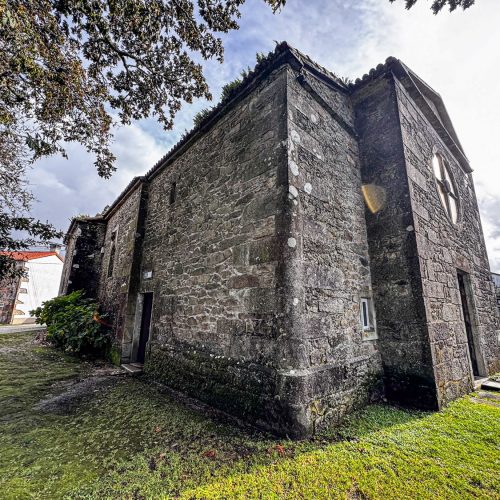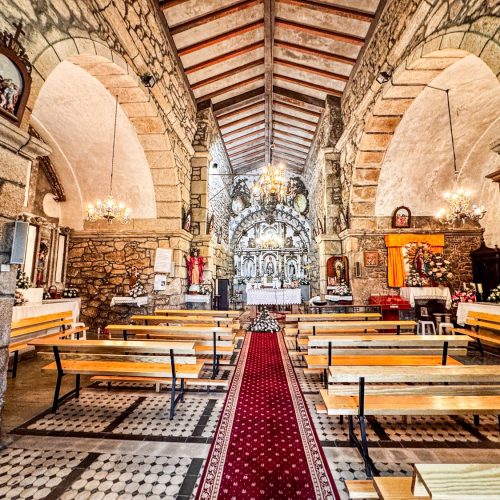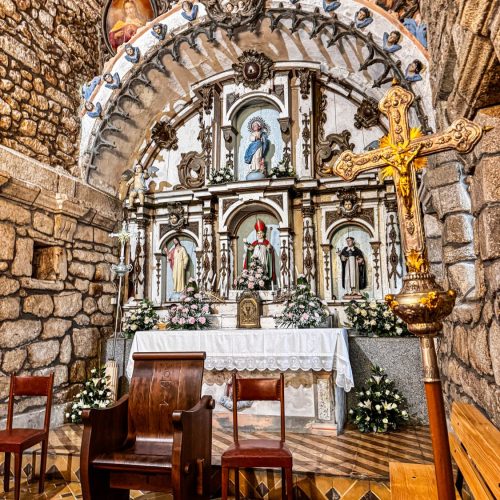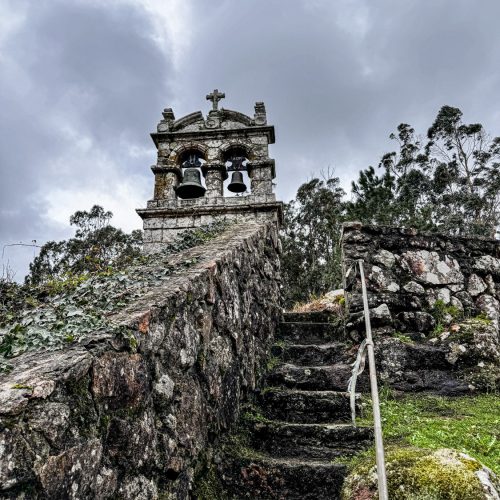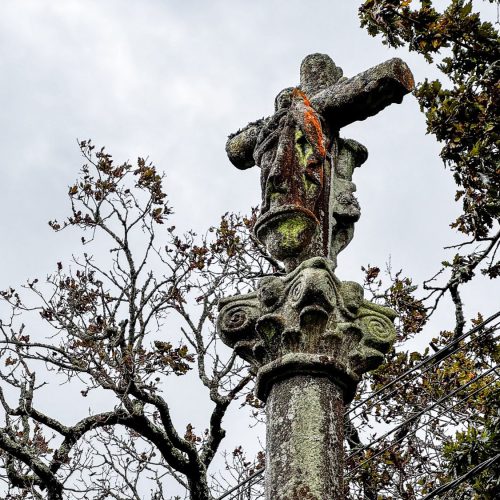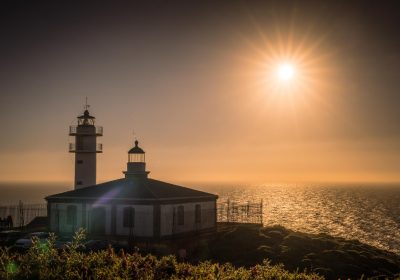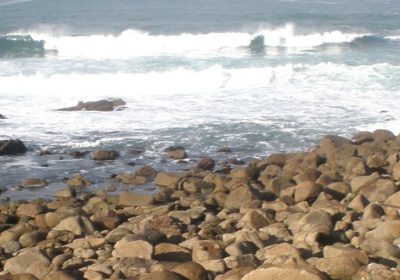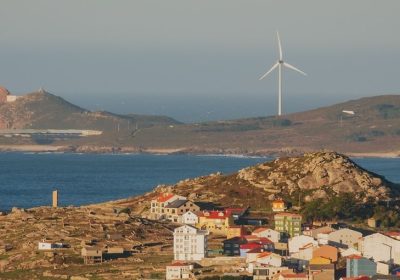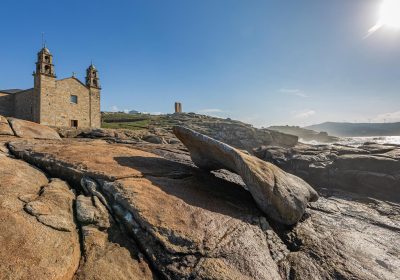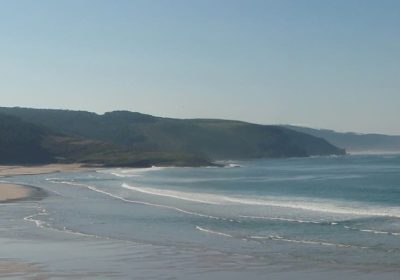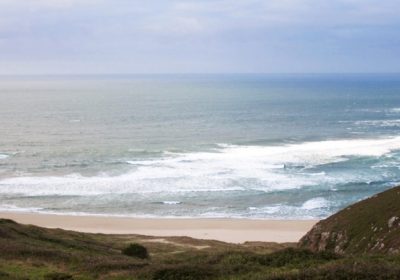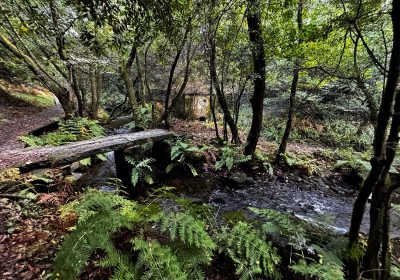In the hamlet of A Grixa, in the parish of San Cibrán de Vilastose, we find one of the most distinctive religious complexes in the Municipality of Muxía and along the Fisterra and Muxía Way. This small village on the Costa da Morte preserves the parish church, a separate baroque belfry, the chapel of Our Lady of the Rosary, a traditional hórreo (granary) and the stone cross that presides over the churchyard, creating a rural landscape that captivates those who walk these Jacobean stages towards the “end of the world”.
Parish church of San Cibrán de Vilastose
The parish church of San Cibrán de Vilastose is an elegant example of Galician rural baroque, surrounded by the parish cemetery and located right beside the Camino route. The main façade is dominated by a large circular window, a true “stone eye” that lights up the interior and has become an icon for pilgrims arriving from Dumbría on their way to Muxía. Inside, you can still see elements of great interest, such as the fresco of the martyrdom of Saint Cyprian in the sacristy, a reminder of the long faith tradition of this seafaring and farming community.
Detached belfry
One of the most striking features of this religious architectural complex of Vilastose is its detached belfry, standing on a small rise in front of the church. It is a separate baroque bell gable, reached by a stone staircase from which you can overlook the whole valley and hear the echo of the chimes, a true hallmark of the parish. The bells of San Cibrán de Vilastose have been ringing for centuries to mark baptisms, festivities, funerals and calls to mass, and they remain key elements in the promotion of the rural belfries of the Costa da Morte.
Stone cross of Vilastose
Completing the ensemble, the Stone cross of Vilastose raises its granite cross beside the church, the hórreo and the chapel of the Rosary, creating a very photogenic scene for visitors to Muxía. The square base with three steps and a table, the pedestal and the shaft on its plinth support a richly decorated capital topped by a cross with images on both sides: the Virgin and the crucified Christ, symbols of protection for the houses and paths of this parish on the Costa da Morte and a must-stop for anyone exploring the area through the interactive map.

